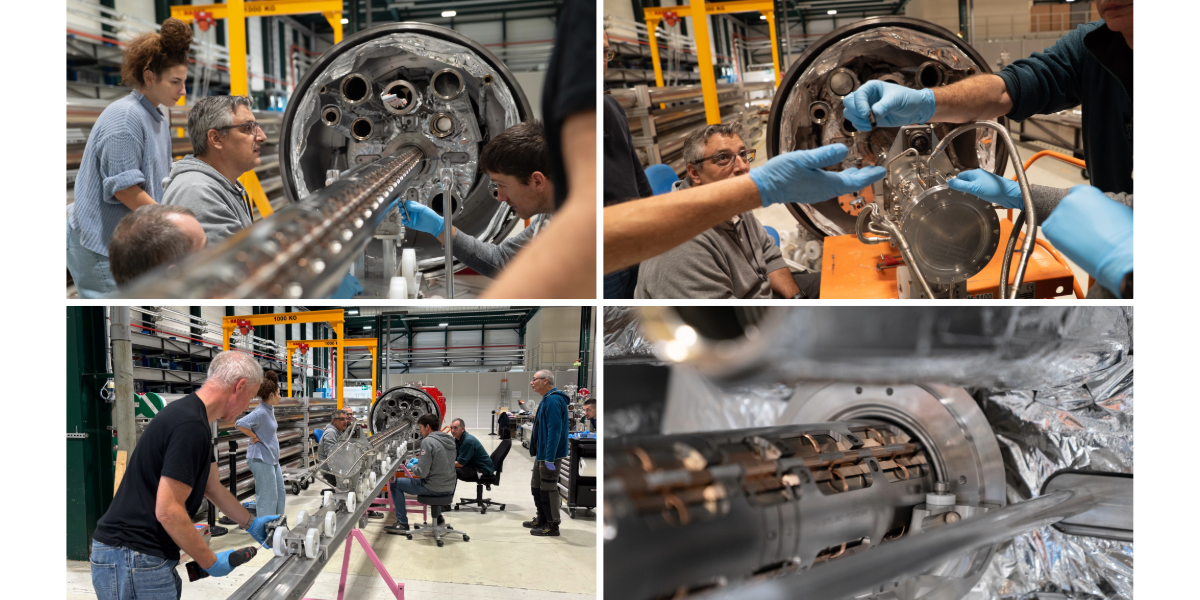By Florence Thompson (CERN)
On Wednesday 29th October 2025, the first novel HL-LHC beam screen was inserted into a cold mass, meaning that the first HL-LHC magnet will soon be fully ready for the tunnel!
‘Beyond the technical challenges of the shielded beam screen itself, this first beam screen insertion in the MQXF magnet marks an important moment because you really see (or even touch by hand) the combining of different things developed by different teams fitting together to form a single system for the HL-LHC machine,’ comments Cedric Garion, engineer in charge of the HL-LHC beam screens.
What is a beam screen and what is special about the new ones for the HL-LHC?
Beam screens in the LHC are the inner-most layer around the beam in the magnets all around the accelerator ring, including either side of the collision points, and their role is to reduce heat load and radiation-induced damage, and ensure vacuum performance.
The new beam screens for the novel HL-LHC inner triplet magnets (those either side of ATLAS and CMS) will shield the surrounding magnets and equipment from debris produced by the collisions in the experiments. They incorporate numerous tungsten absorbers to intercept debris from the collisions, protecting the superconducting coils from premature radiation-induced damage and intercepting heat load that would significantly affect the cooling capacity of the cryogenic system.
The inner surfaces of the beam screens are coated with a layer of amorphous carbon to reduce the emission of secondary electrons from the beam screen surface, suppressing the formation of electron clouds (which can cause beam instabilities, reduce vacuum quality and increase heat load).

Figure 2. Team preparing the magnet (top), and transferring the beam screen to a movable bench (bottom). Florence Thompson / CERN
How did the insertion take place?
This integration of the beam screen into the cold bore was done in three main stages. Firstly, engineers and technicians assembled the beam screen with a beam position monitor (an instrument which measures the position of the beam, produced in-house at CERN). At this point the beam screen was still enclosed within a chamber used to apply the amorphous carbon coating (the final step of production of the beam screen).
They then carefully pulled the beam screen out of the chamber and transferred the assembly onto wheeled structures on a mobile bench, which they then positioned in front of the cold bore.
The team then carefully inserted the beam screen, using dedicated tooling – including titanium springs equipped with ceramic balls assembled on the beam screen – to properly manoeuvre and position it in the tight space constraints inside the cold bore.
What’s next?
Now that the beam screen has been successfully inserted into the cold bore, alignment procedures will take place to ensure correct positioning before the equipment is welded to fix it in place. Following pressure and leak tests of the vacuum enclosure and cooling circuit, the magnet assembly will be prepared for storage and transport, readying it for its final installation in the tunnel during Long Shutdown 3! A further 23 inner triplet magnets will be assembled with beam screens (24 in total) for the HL-LHC.

Figure 3. Insertion of the novel beam screen. Florence Thompson / CERN

